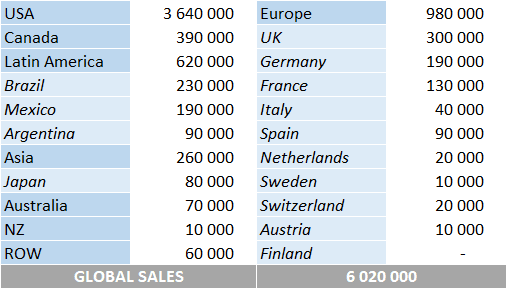

Her best performance arrives on the muted, throbbing “Vulnerable.” Though the wordplay can be a bit heavy-handed-“If I let you cross my finish line, then would you wanna make it?”-Gomez sounds firm and assured even when she dips into a whisper. For the first time, Gomez seems to have a grasp on her range and mainly sticks to a husky, bedroom-eyes murmur instead of attempting bravado. Low and breathy, her understated vocals are better suited for intimate contemplation than big, belted catharsis. Gomez’s biggest hurdle as a musician has long been her voice. When Gomez looks back on toxic relationships wracked with mistrust or self-sabotaging anxiety spirals, her perspective is more grateful than regretful, as if to say that everything in life is a valuable lesson. But Rare doesn’t dwell on heavy realities like chronic illness or the ice-cold grip of depression or, really, any sadness lingering after heartache. After waving goodbye to a lover who does not respect her worth on the blissed-out self-titled opener, Gomez cleanses her heart with an electro-pop party on “Dance Again.” Dancing through pain is by now a tried-and-true motif in pop music, but the sentiment holds extra weight for Gomez, who undoubtedly knows from her lupus how it feels to be powerless over your body.

It feels spiritually in tune with the woman who once cheerfully told Vogue that people would be surprised to learn how much she loves “depressing things.”īut Rare’s celebration of autonomy, resilience, and growth is overwhelmingly upbeat. While none of these 13 songs attempt the subtle weirdness of “Bad Liar” and the emotional thesis-self-love!-can be a bit one-note, Rare is the 27-year-old’s most cohesive record to date. Though the song’s drama is an exception, its moral of losing love and gaining self is the guiding ethos of her third record, Rare. Her anguished soul-searching struck a nerve: “Lose You to Love Me” became Gomez’s first Billboard No. While dropping hints at which supposedly “ Sorry” singer had been dragging her down, Gomez reclaimed her own narrative.

The song looks at the ways she lost herself in a relationship and solemnly promises to never make that mistake again. When Gomez shared the ballad “Lose You to Love Me” last fall, it seemed like the work she put into her physical and emotional wellness had clicked. “I just needed to let my old self go,” Gomez told Zane Lowe this month.
#Selena gomez revival album sales movie#
Besides popping up for the occasional movie role or fashion collaboration, Gomez focused on herself.
#Selena gomez revival album sales series#
But in 2017, the same year she underwent a risky kidney transplant due to complications from the autoimmune disease lupus, Gomez shared a series of genre-curious singles including the Talking Heads-sampling “ Bad Liar.” After checking the cultural pulse, the then most-followed woman on Instagram logged off, removing herself from the public eye once more. Over the next five years, Gomez’s journey towards emancipation would be challenged by serious struggles with anxiety, depression, and chronic illness that sidelined her music career and threatened her life.


 0 kommentar(er)
0 kommentar(er)
